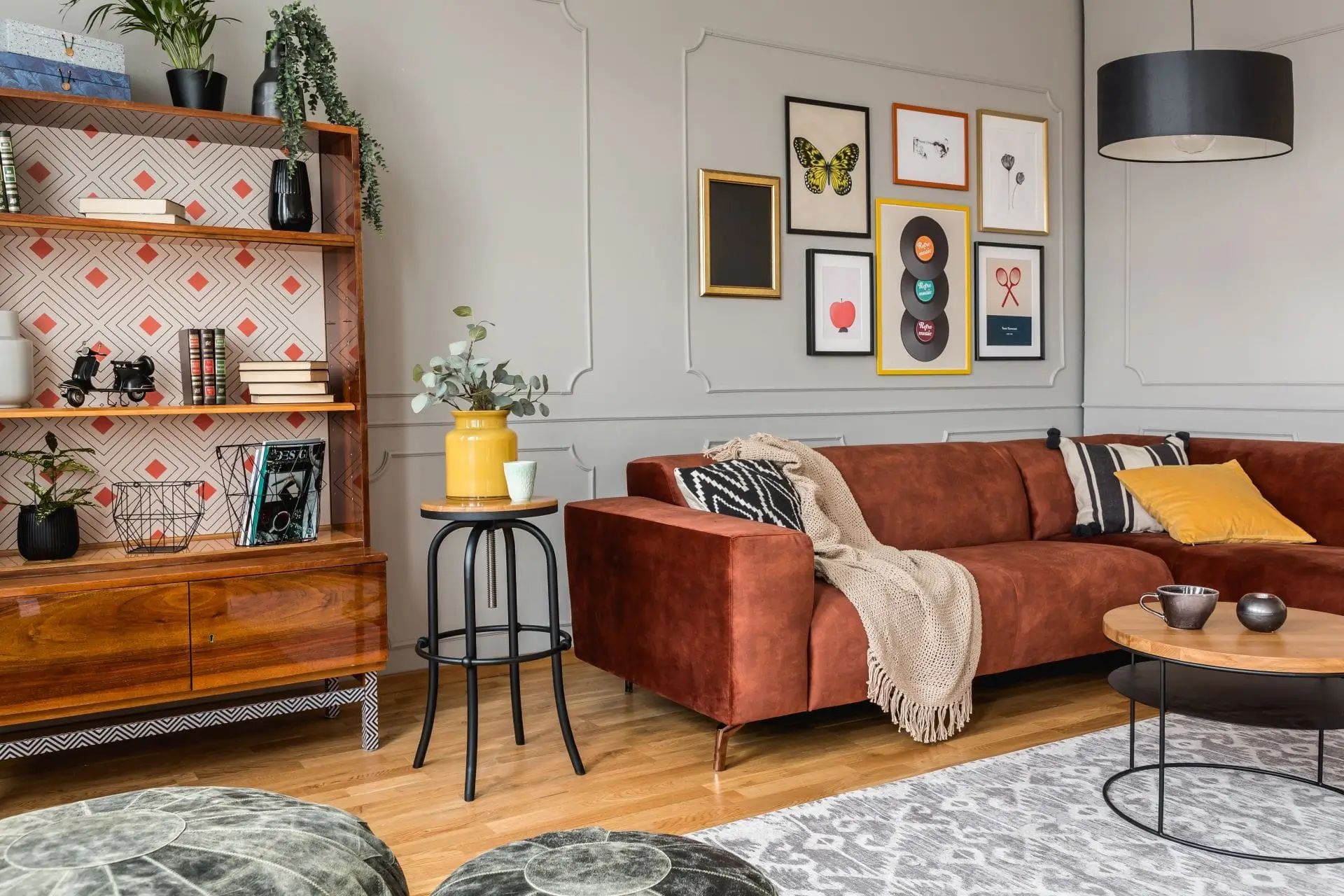Trends often change quickly in the world of interior design, yet some classic designs never fail to return. Retro interior design has seen a noticeable comeback in popularity lately as homeowners have grown more attracted to the appeal and creativity of earlier times.
The rise of this trend is a conscious decision to bring nostalgia, coziness, and a hint of retro charm into one’s spacious home rather than merely paying tribute to the past.
Although many people are interested in creating their ideal retro style, it’s also noticeable that some of them don’t know where to start or what kind of materials and decor to buy in order to get the exact look they want.
Hence, this article will discuss the return of retro interior design and how to decorate your home to give it a more vintage appearance—especially in spacious homes that combines both the past and the present.
What is retro style in interior design?
Retro design is a style that mimics or draws aspects from earlier design concepts.
A retro interior design is an eclectic blend of modern designs and ancient styles, or new forms combined with antique materials and finishes. Though the 50s, 60s, and 70s are the most frequently referenced eras, any decade can be explored here.
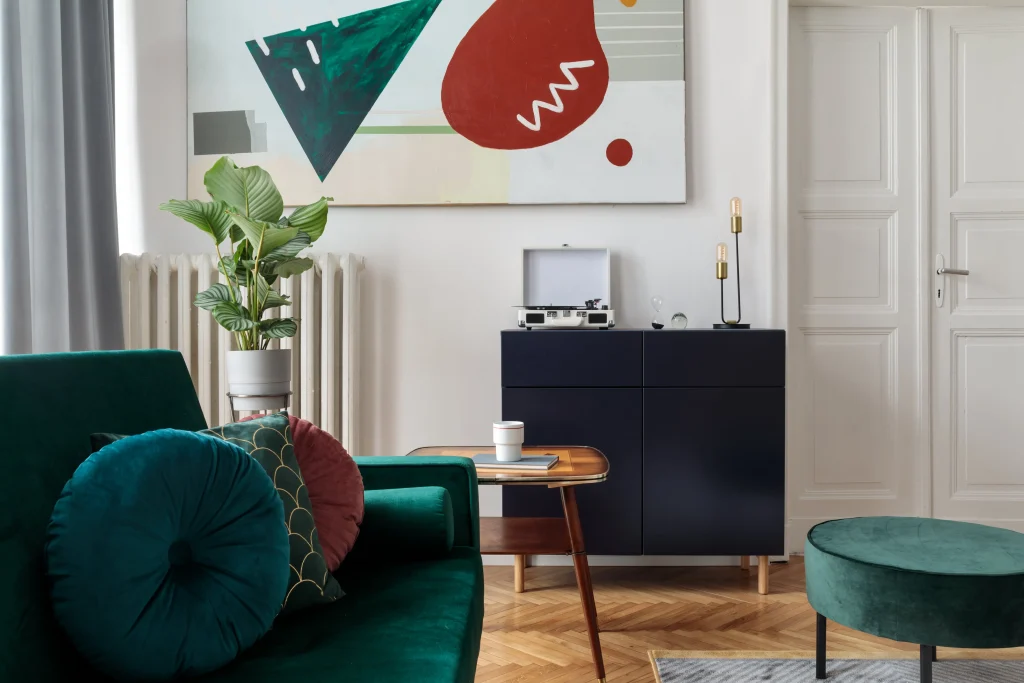
Moreover, retro design can refer to anything—from a modernized version of a vintage design to a modern design that was influenced by parts of an older style. Retro design encompasses a wide range of styles, from stylistic variances to designer interpretations.
What does retro style look like?
Retro style, which draws its inspiration from 1950s, 1960s, and 1970s garments, recalls aspects of the recent past and has little historical significance. That being said, retro style is clearly inspired by the bohemian home decor style of the 1970s and the mid-century contemporary design of the 1950s.
Furthermore, retro decor is the style to try if one would want to add some ’70s interior design to their spacious home, channel some strutting ’60s, or rock ‘n’ roll aspects of the ’50s. Retro decor simply recalls the spirit of a free and rebellious post-war age.
Likewise, the term “retro design” typically describes the visual styles of the 1960s and onward, which popularized vivid colors, geometric shapes, and graphical patterns. Nonetheless, modern retro designs are created by designers redefining ancient styles, and vintage art has been changing since the Middle Ages.
How to decorate a retro home?
1. Making use of vibrant colors
Using a warm and vivid color combination is one of the simplest ways to create a retro vibe in a space.
For instance, it is recommended to use tones like hot orange, mustard yellow, avocado green, and teal. To give your home an authentic retro feel, homeowners may apply these colors on the walls, furniture, and decorations.
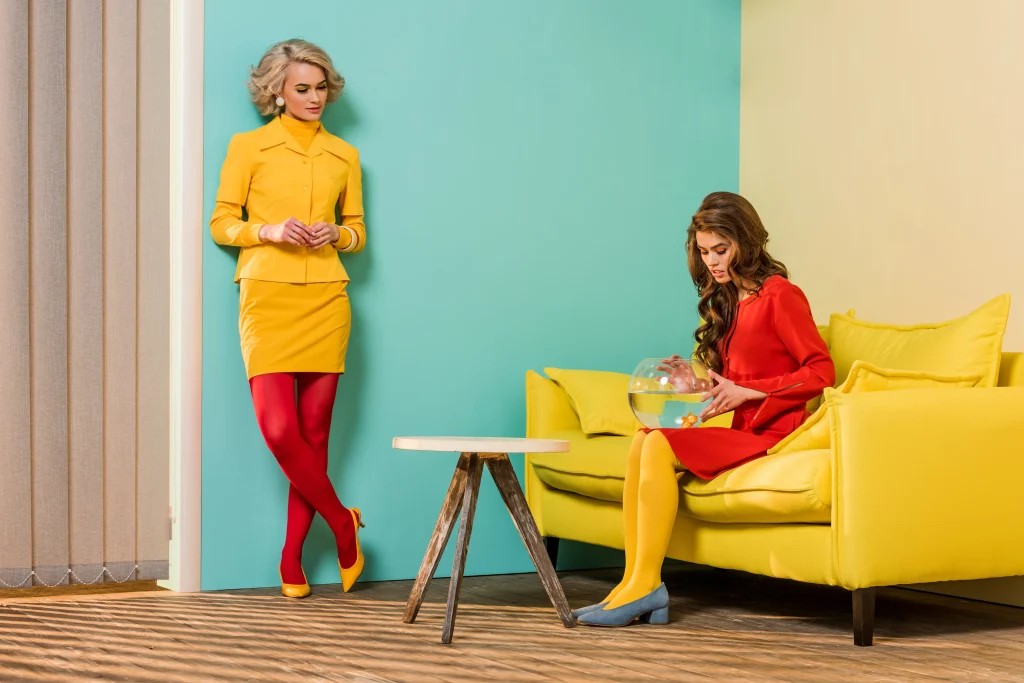
In addition, the combination of warm green, ochre, and terracotta oranges creates a distinctly retro color palette. Especially now that wallpapers are so important, it’s time to incorporate bright and lush features into the home’s design. As the main feature, designers may also incorporate botanicals, vibrant flowers, or jungle patterns.
2. Furniture selection
Homeowners should seek out furniture that matches the aesthetic of the era (or eras) they have selected.
Natural materials and simple lines define the twentieth century modern furniture, which is a popular option. Vintage stores, flea markets, and online sources may also be valuable resources for real retro furniture that gives your home personality.
On the other hand, if homeowners are all about saving money after finishing all of the renovations, they may easily repurpose their worn-out furniture by giving it a little polish and reorganizing.
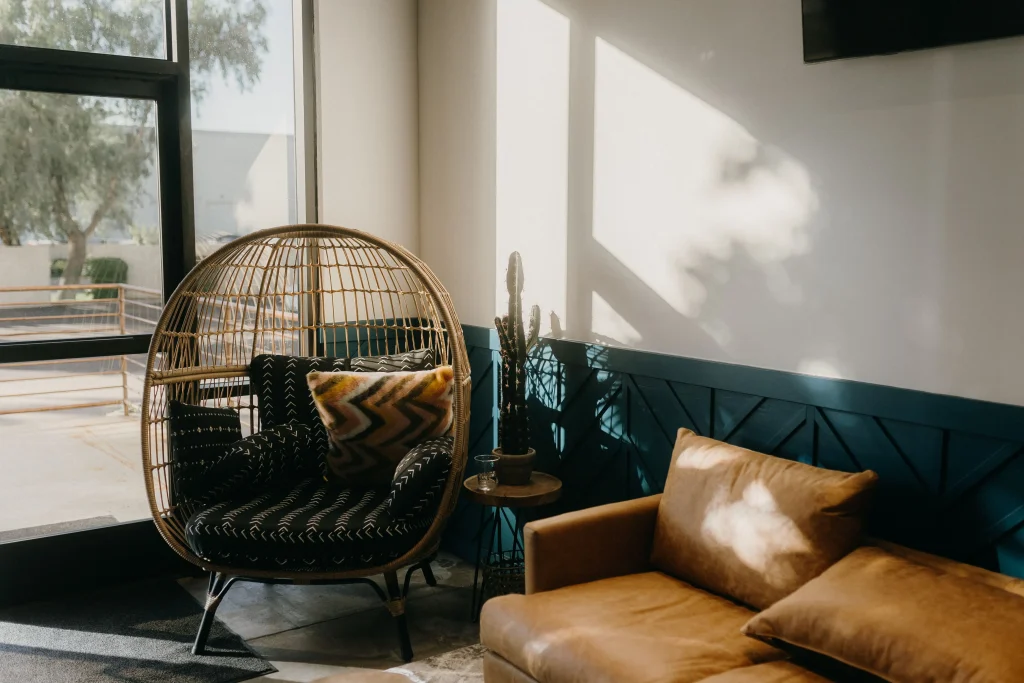
Egg chairs, womb chairs, Eames lounge chairs, as well as Bertoia bar stools are a few examples of vintage furniture designs that are still in demand today. Hence, adding these pieces of furniture can no doubt quickly turn a boring room into a visually appealing one.
3. Retro appliances with a touch of modern
Stainless steel appliances have been connected with an extravagant, modern kitchen for the past few years; the more sleek and contemporary, the better.
Retro appliance designs are now once again available in many stores. These vintage appliances have an extra advantage of modern technology, which can elevate your home’s aesthetic and historical value.
Thus, it is recommended for homeowners to choose vintage kitchen appliances to finish off the space, such as KitchenAid mixers, Morphy Richards cooking pots, and SMEG refrigerators. These well-known appliance brands are popular to retro enthusiasts’ interests and personalities.
4. Accessories and decor with a personalized touch
Use vintage elements that express one’s own taste to elevate the living space.
Homeowners can add a personal touch by including old radios, vinyl players, and rotary phones. Additionally, to give their room something extra, they might also exhibit framed posters or other artwork that speaks to the era they have selected.
5. Texture, fabrics and patterns
The careful use of textures, fabrics, and patterns is one of the main components that, when it comes to retro interior design, can really take people back in time. These components not only create visual interest, but also a nostalgic, personal ambiance from many eras.
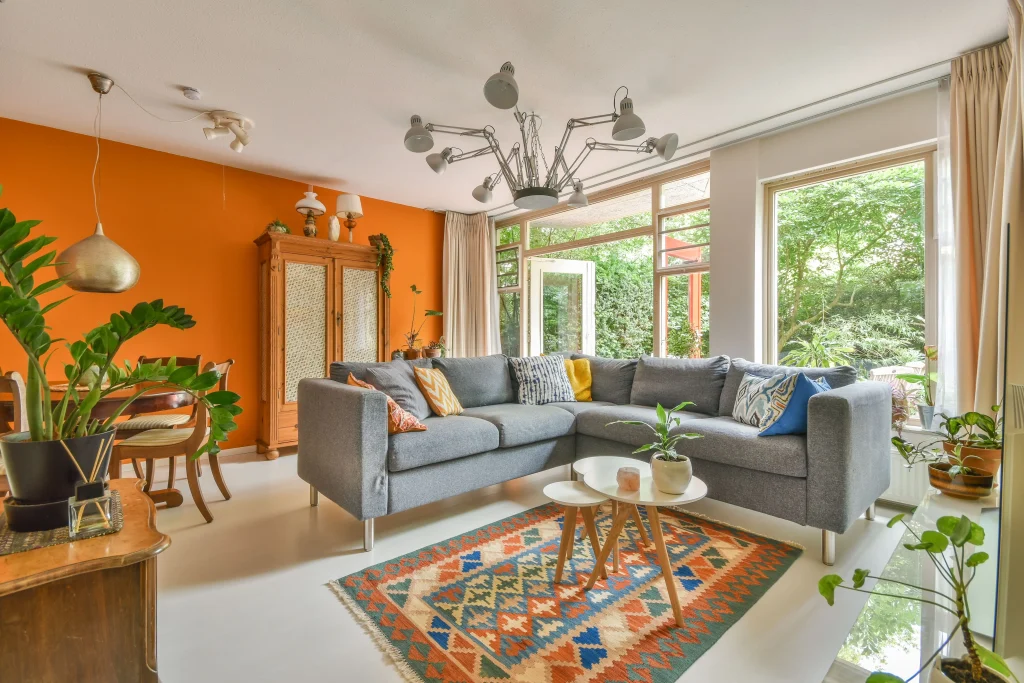
Begin at the starting point by adopting the popular shag carpet trend of both the 1960s and the 1970s. With their long, tufted strands, these velvety and extravagant carpets not only feel soft underfoot, but also provide an air of lavishness to the space.
Applying geometric patterns to walls is an additional option. Mid-century modern style was defined by geometric wallpapers, which are still a classic option for producing a nostalgic feel. Just make sure the colors chosen fit the overall theme, whether the focus is on abstract shapes or repeating patterns.
Lastly, checkerboard patterns are a great way for homeowners to capture the vibe of a 1950s diner. A fun and retro touch may be added to any space by incorporating black and white checkerboard patterns into furniture designs, backsplashes, or kitchen floors. Anyone can achieve a unified retro style in the house by adjusting this classic design to different pieces.
Bottom Line
Adding retro design elements to your home is a fun way to travel back in time. One can design a room that is not only aesthetically pleasing, but also full of nostalgic feeling by carefully choosing pieces that are unique to a particular era and adding a personal touch to them.
Experiment with various combinations without limitation, and let the distinctive tactile features of these pieces take people back to a period of bold, charming, and highly individualistic design.


